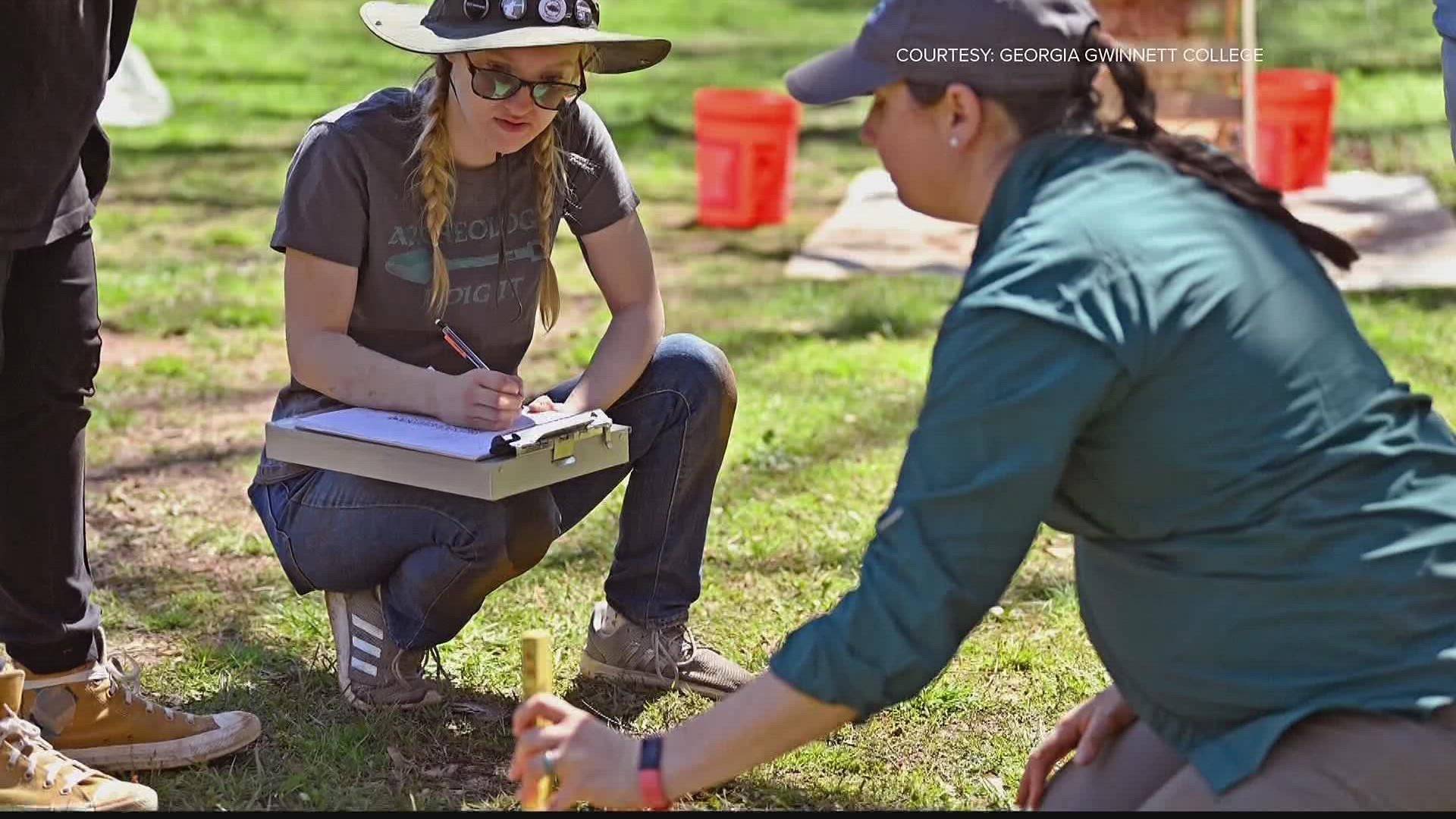LAWRENCEVILLE, Ga. — A Georgia Gwinnett College anthropology class is taking on a massive project to find enslaved people who went missing in the 19th century while living on the William Harris Homestead in Monroe, Georgia.
According to census records, from 1840 to 1860, around 10 to 18 enslaved people were owned by the Harris family. Although now the Harris Homestead is a museum and education center, a large part of knowing who once lived and worked on the property is still missing.
The process of uncovering these lost stories started back in 2017 when GGC Associate Anthropology Professor, Dr. Kathryn Deeley was invited by Harris Family descendants and The Gwinnett Archeological Research Society to conduct the excavation.
“We're conducting archeological excavations on the site to try to locate the original location of the quarters where the enslaved people would have lived, and hopefully once we find them, we'll be able to learn a little bit more about what life was like for those people.”
By 2019, Dr. Deeley’s class had finished excavating the first site she was interested in. However, due to the COVID-19 pandemic, the project had to halt its efforts, according to a release from the school.
Now, she is back out on the site with her students trying to piece together a part of history that has been lost for centuries.
“We’re trying to expand the narrative to include all of the people who would have lived on the site, which wasn't just the Harris family, it was also the enslaved people that the Harris family-owned,” Dr. Deeley said.
To do this, the class is using a precise method to thoroughly comb through the digging sites.
“We're doing mostly what's called a shovel test survey, which means we're digging controlled one-foot by one-foot holes every 10 feet, trying to narrow down the potential location of these borders.”
What are they hoping to find in these holes? To put it simply, trash.
Dr. Deeley said that even the smallest pieces of trash can hold so much information about the lives the missing enslaved people were living.
“So there are a lot of questions that we can answer through archeology because everybody makes trash, but not everybody makes it into the history books,” she said. “Not just what size the houses were, but what kinds of food were they eating? What kinds of dishes were they eating off of? What kinds of medicine were they using if they got sick so that we can incorporate those stories into the larger narrative of the property?”
So far, they have found a “ 20th century mixed VapoRub bottle” and ceramics that were next to their excavation, and although it doesn’t seem like much, it has pointed them in the right direction.
“It does tell us that this was part of the site that was utilized. And I'm hoping that it was the part of the site that was utilized as a trash dump because it was close to the quarters where the people were living,” Dr. Deeley said.
The project has expanded to include not only students from GGC but also UGA and volunteers from The Gwinnett Archaeological Research Society
Ginger Perdue is a student in Dr. Deeley’s anthropology class, and she said that she is happy to have been out in the field.
“You can only learn so much from a textbook. So I think actually being able to go out and experience it helped me learn a lot about the actual methods that we used.”
GGC political science and anthropology student, Julia Barnett, also worked on the excavations and she said she is happy to be able to be included in this special piece of history.
“It was so fun getting to be a part of history and a part of helping everyone be included in the narrative, not just select people.”
According to the release, Dr. Deeley hopes that this project will allow her to track down descendants of the missing enslaved people. Until then, she will work to have these people remembered.
"It's a significant opportunity because most of what we know about the lives of enslaved people comes from the big plantations. Most of the 40,000 enslavers in the 19th century owned six people or less," she said in a GGC press release. "It's emotional, because these people have been forgotten, and we want them to be remembered."

